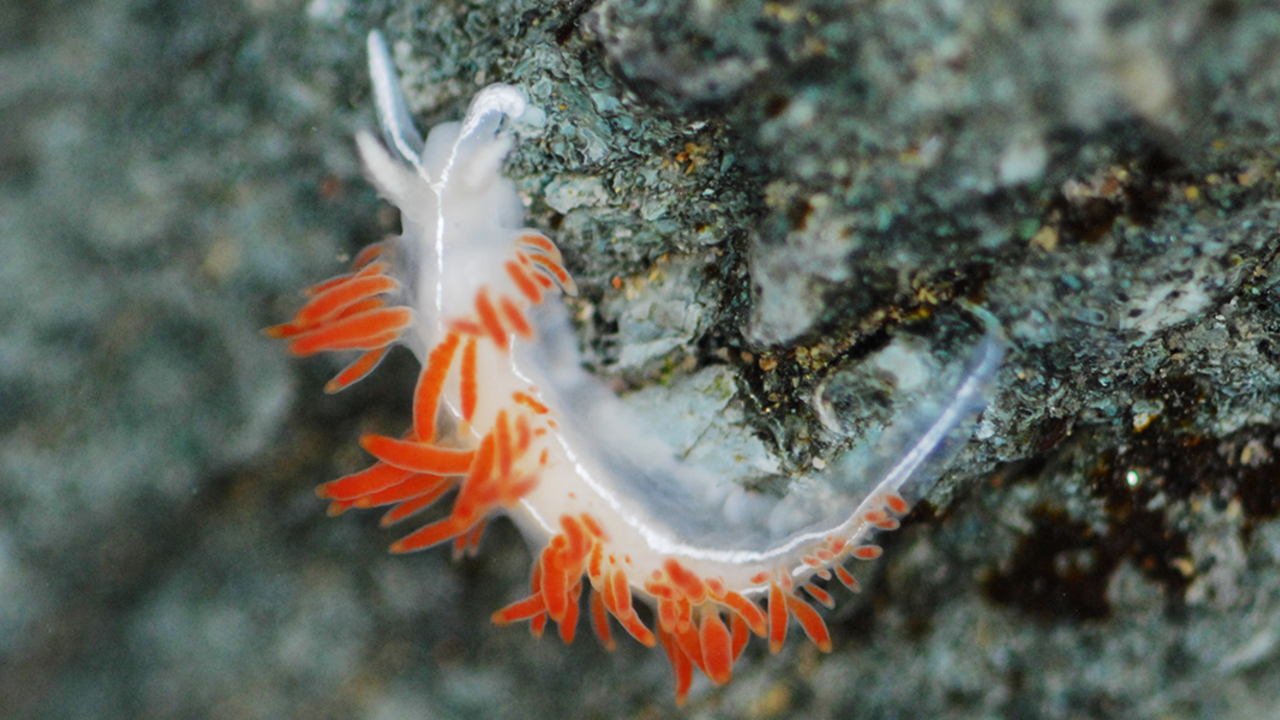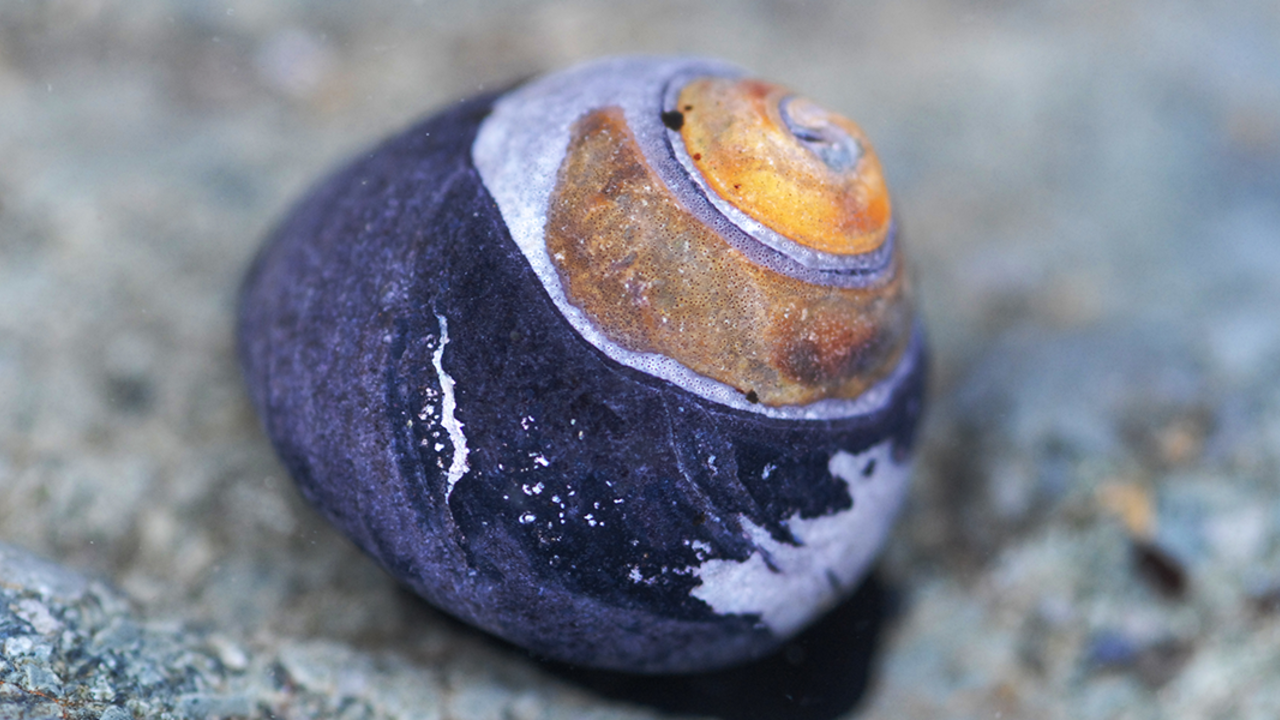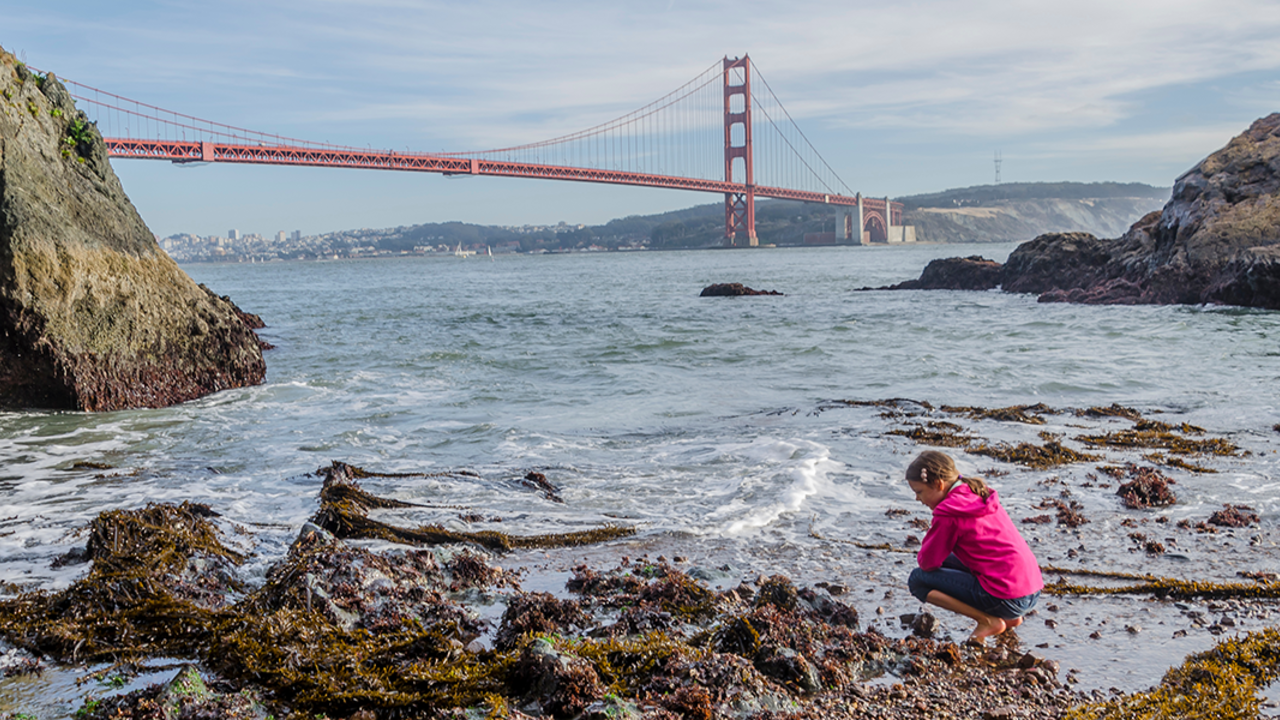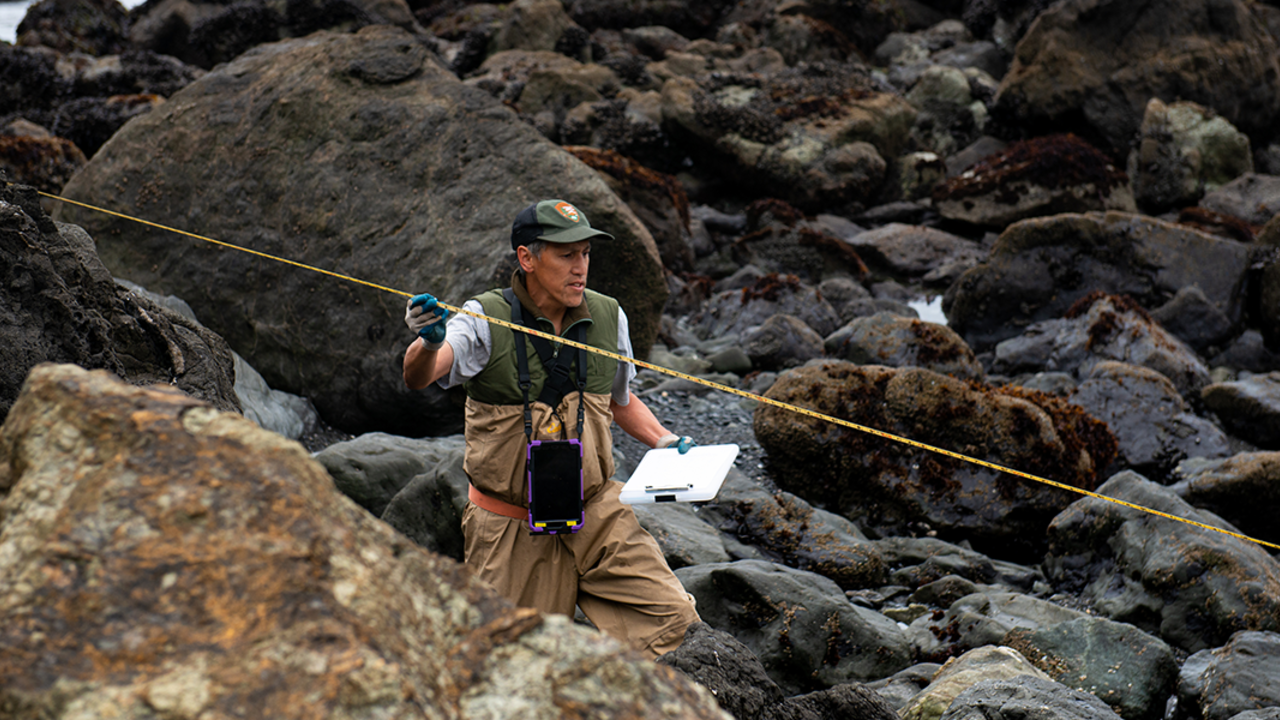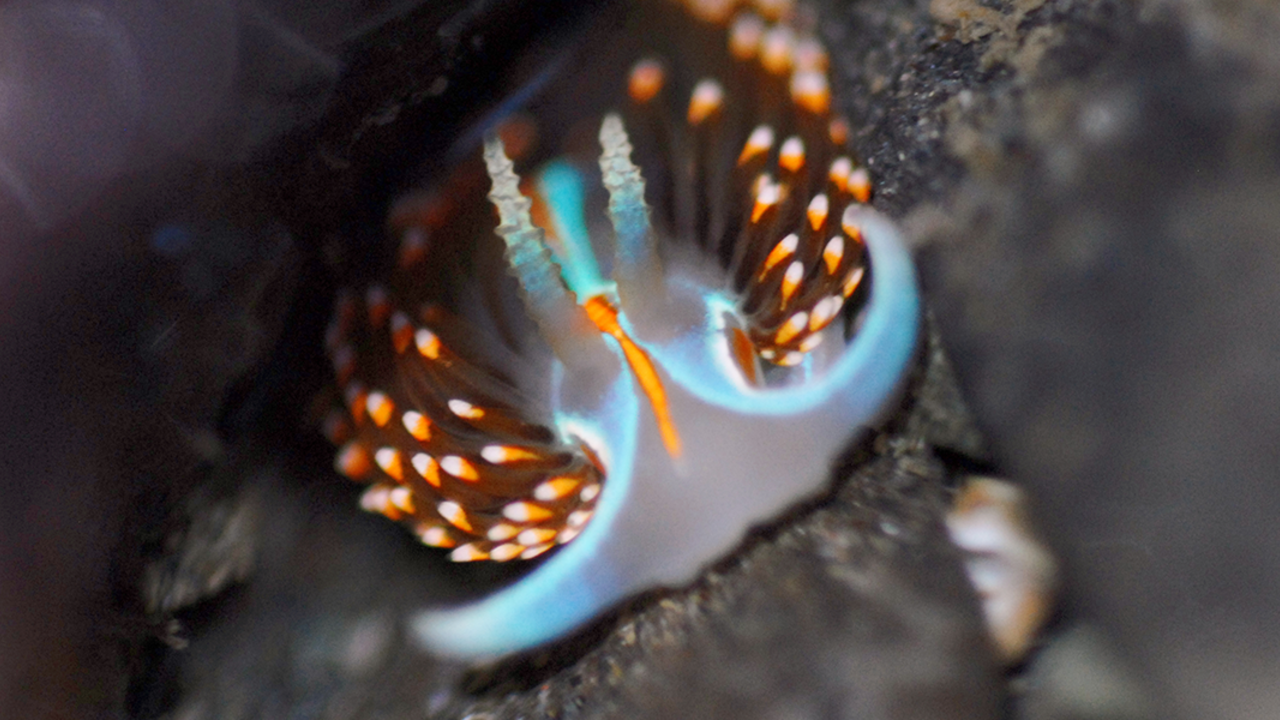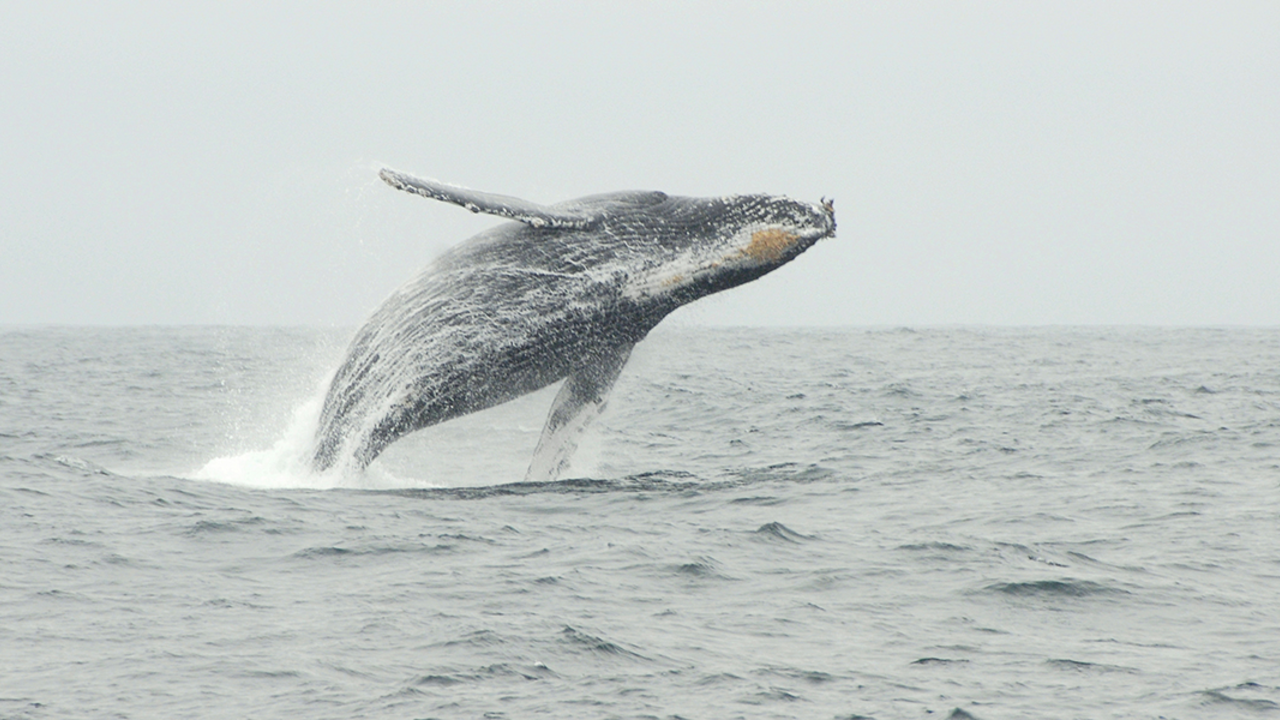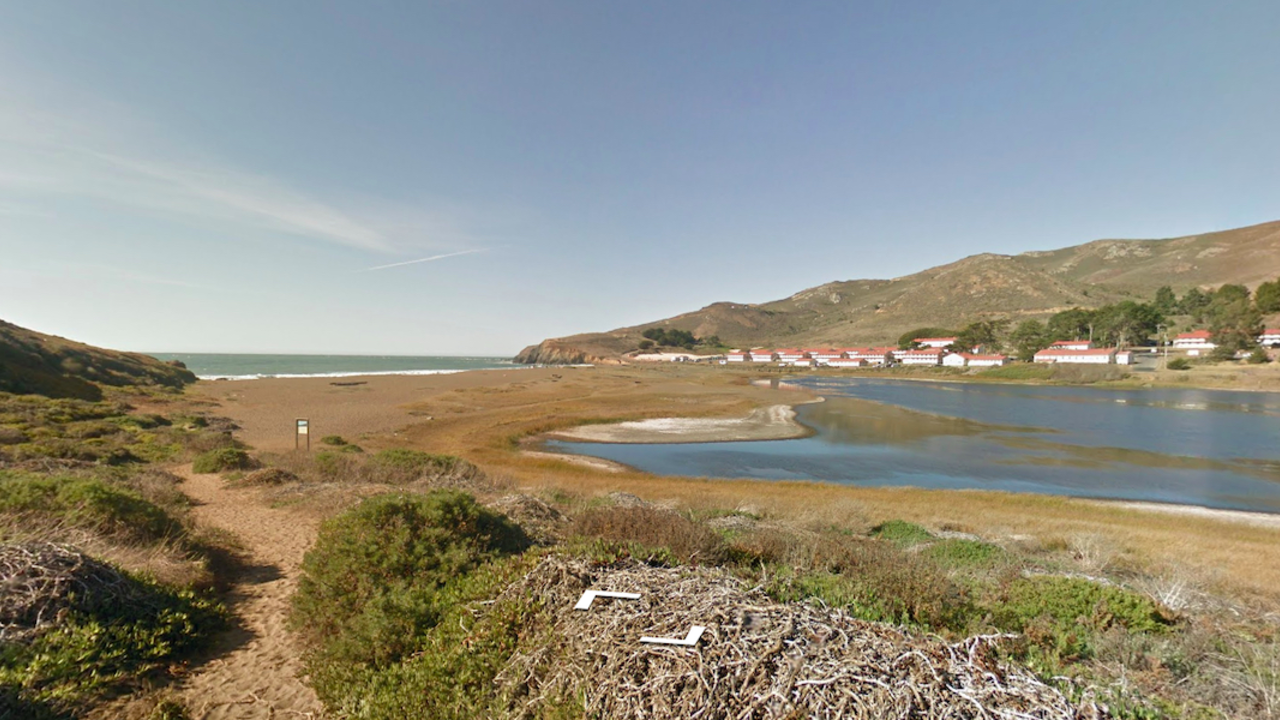We followed National Park Service Aquatic Ecologist Darren Fong through a matrix of rocks along a shoreline in the Marin Headlands. Darren moved nimbly through the precariously balanced boulders in this intertidal zone of the Golden Gate National Recreation Area (GGNRA). My coworker Bea Kilat and I traced his path, carefully side-stepping tide pools and slick rocks.
So focused on my footing, I hardly noticed the details of the unique habitat we had just entered.
“Stop for a second and listen,” Bea said as she found a secure boulder to stand on.
Still and quiet, we listened to all the life in motion around us. Small crabs tapped along with their slender feet. Water saturated with phytoplankton splashed through the rocks. Air bubbles snapped on the surface of the still pools of water, escaping up from filter feeders below.
WHAT SPECIES LIVE IN TIDEPOOLS?
- High intertidal zone: Ribbed limpets, acorn barnacles, periwinkle, small-shelled snails, pyramid snails, rock weed, lined shore crabs
- Middle intertidal zone: Ochre star, mossy chiton, sea lettuce, goose barnacles
- Low intertidal zone: Purple sea urchins, bat sea star, giant green anemones, corraline algae
“This is a very dynamic area,” said Darren. “Large unstable boulders are moving around with moving tides, big waves, and large storm events. The plants and animals are really adapted to this high energy wave environment.”
Looking from the reflective pools of water to Darren, Bea asked him, “how does life interact in this area?”
“Certain areas support certain creatures,” said Darren. “Buckshot barnacles and pyramid snails are adapted to the high intertidal splash zone and you won’t see them very often down lower. Conversely, in the lower intertidal zone you’ll see things that are more adapted to being underwater. There’s a nice delineation of where critters and plants stay in their comfort zone. As we work down from high to low, we’ll see different species.”
TIDEPOOLS AND THE INTERTIDAL ZONE
- Areas that retain water under low tides
- Occur anywhere we have tides and hard substrates (like rocks)
- Refuge for species that can’t take constant exposure to sun and air
- Ocean rises and retreats twice each day, exposing the intertidal zone
Darren and his coworkers, Stephen Skartvedt, Geographic Information System Specialist and Karl Kindall, Hydrologic Technician, were taking geographic measurements at predefined intervals throughout the tide pools. With this data, they will create a 3D topographic map of this section of tide pools. They’ll use this map and their species observations to monitor if and how plants and animals shift their position over time throughout the high and low intertidal zones.
With things like sea level rise caused by climate change affecting our oceans, I could imagine why it could be important to monitor where a barnacle lives in the intertidal zone. What if sea level rise pushes the intertidal zone father up the shore? Are barnacles adapted for that elevation? Maybe the intertidal zone would become narrower. Could a small-shelled snail compete with all of the other species that have to share a smaller home? These are some of the questions that Darren and his team are trying to answer in their work.
TAKING CARE WHILE TIDEPOOLING AND PROTECTING THIS HABITAT
- Tread lightly: Observe the tidepools from sand or bare rocks next to the tidepools, and do not step in the tidepools
- Do not touch, disturb, poke, or remove organisms
- Don’t shift or pick up rocks
- Don’t litter, remove trash you see
- Macro scale: Do what we can to help mitigate climate change
- Support and advocate for maintaining and creating protected habitats
We meandered back to the parking lot along the water’s edge, collecting food wrappers, styrofoam, and a forlorn pool noodle that had washed ashore. Many times before, I had walked along the fine sand on the beach, not fully realizing how many creatures were hidden in the rocks clustered between me and the water. What a life they lived clinging to boulders in the wild surf. Each snail, each strand of kelp, had adapted perfectly over thousands of years for an existence of constant motion in their special section of the intertidal zone.
SAFETY, WHEN AND WHERE TO GO TIDEPOOLING?
- Watch your step: Rocks are sharp and algae is slippery
- Tide tables: Check the tide table, go during a minus tide, and the hour before and after low tide
- Don’t go during surf advisories and never turn your back to the ocean: Unexpected large waves can be dangerous if you don’t see them coming
- Dress appropriately and don’t get wet: Water and coastal temps can get very cold.
- Go during low tides in spring, early summer, and late fall
- Go anywhere with rocky substrate along the shoreline
REFERENCES:
http://npshistory.com/brochures/pore/tidepooling.pdf
https://www.montereybayaquarium.org/stories/tide-pooling-tips
https://www.popsci.com/seasmells/
